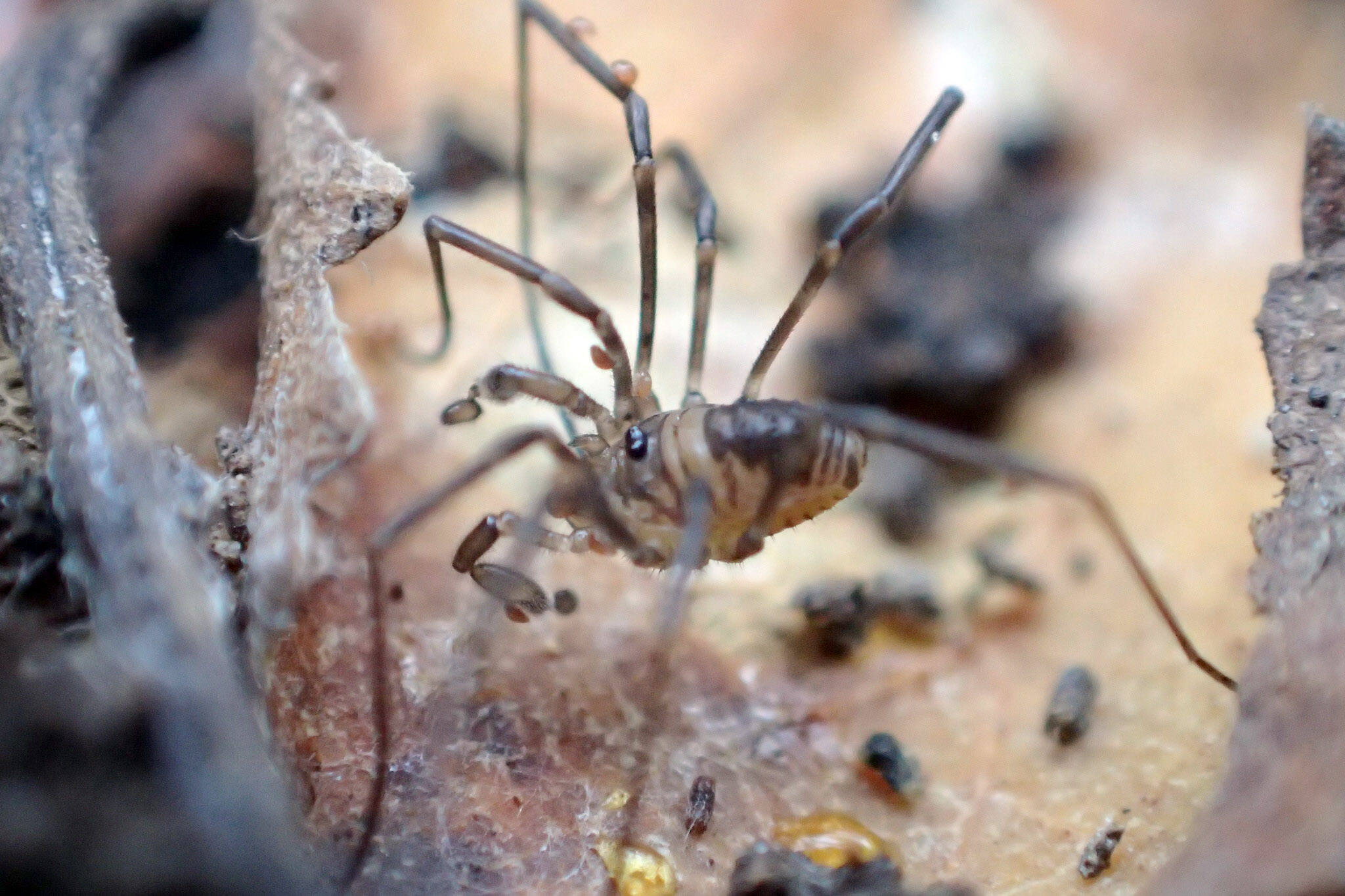Editor’s note: This article was originally published in 2005. It is republished with some updates.
Fall is the time of year when, like them or not, we have to deal with daddy longlegs. As the weather cools, they seem to magically materialize around and in our homes, sometimes in alarming numbers.
They can be a nuisance in this way, but whether or not the offending animals should be immediately squished, ignored or gently transferred back to the garden should be considered.
The name daddy longlegs is sometimes used for crane flies or some long-legged spiders, but here I am referring to the familiar spindly-legged arthropods of the order Opiliones. These are not spiders, but like spiders, mites and scorpions, they have eight legs and they are arachnids.
Spiders and daddy longlegs can easily be distinguished by the shapes of their bodies — the body of a spider is divided into two main parts separated by a narrow constriction; the body of a daddy longlegs appears to be one broadly oval part. Females, especially when full of eggs, are stouter than the smaller-bodied, longer-legged males.
Daddy longlegs have neither fangs nor venom, so they cannot bite people. Instead, they have tiny pincers that they use for grabbing and cutting up their food. These are much too small to be harmful to people, at least in our Alaska species of daddy longlegs.
Most daddy longlegs are generalist scavengers and predators, eager to eat just about any kind of minute animal. Some also eat small amounts of vegetable matter. Most of them hide by day and prowl about at night. They repel potential predators by exuding foul-smelling, distasteful secretions from their scent glands.
We have several kinds of daddy longlegs on the Kenai, each with different habits. The daddy longlegs most often noticed by people is Phalangium opilio. This is the large, mottled gray to brownish variety that is often abundant in gardens, driveways and yards. They are often active out in the open during the day.
Like the cockroach, the house fly and the silverfish, Phalangium is associated with humans in many parts of the world. It is native to the Old World and is probably introduced in Alaska. It is not a pest, though.
In the garden, it is a beneficial animal, eating many small, soft-bodied pests including aphids, caterpillars, grubs and slugs.
Mitopus morio is a native daddy longlegs similar to Phalangium. In our area it seems to prefer to hunt and scavenge in wetlands rather than around houses.
Nelima paessleri is the daddy longlegs that can gather in the thousands in crawl spaces, basements and well houses. They are mostly burgundy to red-brown with banded legs. Nelima is found in much of the boreal forest, where they live secretive lives until the fall, when they seek out warm, damp nooks to spend the winter.
No one knows for sure, though, why daddy longlegs gather into dense aggregations. The most likely reason is a principle called amplification, where a signal becomes more potent or “louder” by concentration.
In this case, the odor given off by a single Nelima when disturbed may not be especially noticeable and might not deter a hungry predator, but the stench given off by a mass of a thousand upset daddy longlegs could not be ignored and would repel all but the most desperate of predators.
In rocky places, in the mountains and on beaches, Leptobunus borealis can be found by day in rock outcrops and under driftwood, stones and debris. They hunt at night. They are small, mottled gray, relatively short-legged daddy longlegs.
Perhaps the most interesting daddy longlegs in our area is Sabacon occidentalis, a delicate, spiny predator with a unique way to capture its prey. Its lanky pedipalps (the appendages which are shaped like pincers in scorpions) are covered in sticky spines. Sabacon whips out its sticky pedipalps to capture springtails, its preferred prey.
The household varieties of daddy longlegs are plentiful on the Kenai, so squishing a few should not harm any population. It is wiser, though, to let them live outside the home and devour pests.
A daddy long-legs found in the house may be caught by herding it into a butter dish or simply picking it up, then releasing it in the garden. A mass of Nelima already in the crawl space may be left alone so that they can exit in the spring. Entrance of daddy longlegs into the home is best prevented by a well sealed structure.
Matt Bowser serves as a Fish and Wildlife Biologist at Kenai National Wildlife Refuge. This article appeared originally in the Refuge Notebook of October 14, 2005. To find more Refuge Notebook Articles go to https://www.fws.gov/kenai-refuge-notebook or find us on Facebook https://www.facebook.com/kenainationalwildliferefuge


